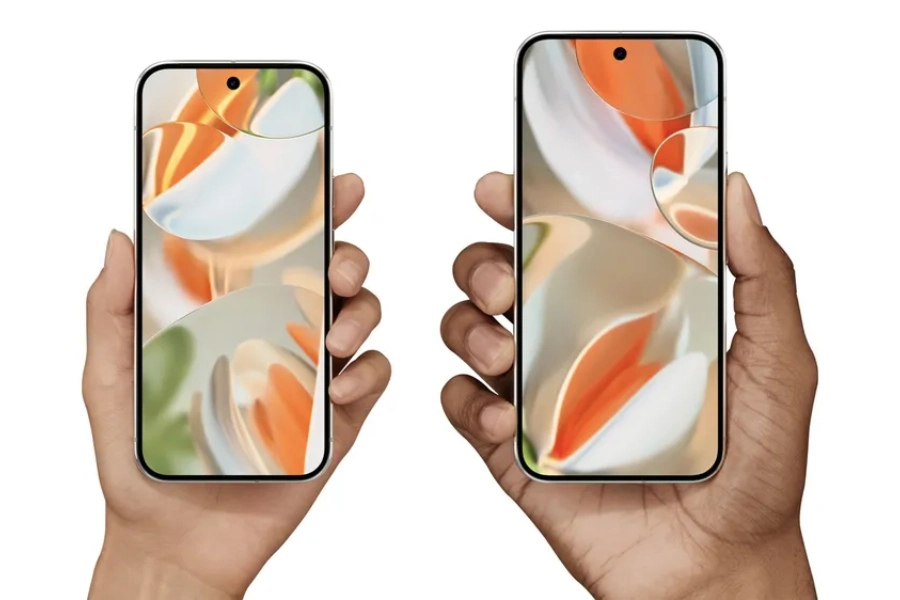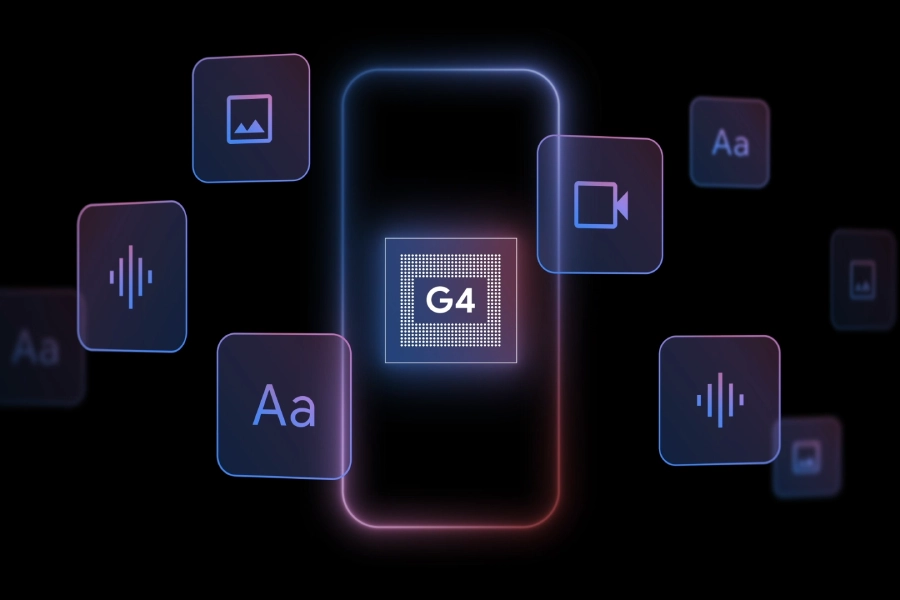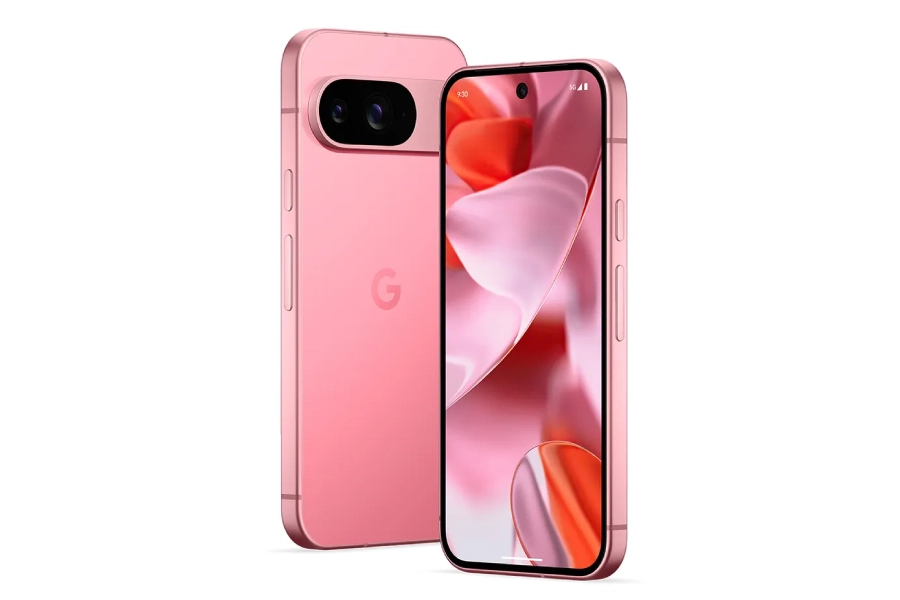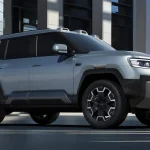Google today launched its latest flagship smartphone – the Pixel 9 series – at its annual Made by Google event. The line has obvious successors to last year’s models—the Pixel 9 and Pixel 9 Pro—but also a new member in the form of the Pixel 9 Pro XL. The new smartphones bring changes internally as well as in terms of looks.
Design and Display
Talking of the looks first, we now have a camera bar that looks like an elongated, free-floating oval module. The frames have completely gone flat compared to the curved sides of the Pixel 8 series and both the front and back have the latest Corning Gorilla Glass Victus 2 for protection.

Underneath that protective layer sits a 6.3-inch screen in both Pixel 9 and 9 Pro. The Pixel 9 Pro XL has a bigger 6.8-inch display which, if you put it into context, technically makes it a successor to the Pixel 8 Pro which had a 6.7-inch screen.
Considering this, the Pixel 9 Pro is the true new model here. It has a pocketable form factor like the Pixel 9 but borrows the specs from the higher-tier XL model. For instance, the latter two share an LTPO OLED display that can refresh anywhere between 1 to 120Hz, has a QHD+ resolution, and 2000 nits of HDR, and 3000 nits of peak brightness. Google calls this a “Super Actua” display while Pixel 9 has an “Actua” screen with an FHD+ resolution, 60-120Hz refresh rate support, and 1800 nits of HDR, and 2700 nits of peak brightness.
Processor
Under the hood, the Pixel 9 phones are powered by the new Tensor G4 chip. Google says it’s their “most efficient chip yet” and is also the first to run Gemini Nano with multimodality. It’s multimodal in the sense that Google’s latest on-device AI model now supports image, audio, and speech, apart from usual text input for prompts.

The Tensor G4’s TPU is equally capable as it is claimed to have an “industry-leading” mobile output rate of 45 tokens/s. But it requires its own resources to work efficiently. As a result, Google has increased the RAM capacity across the entire Pixel 9 family. Even the vanilla Pixel 9 now has 12GB of RAM (up from 8GB on the Pixel 8) while the Pro model bumps that further to 16GB. Part of this memory should directly be allocated to run the new Gemini Nano AI model. As for storage, it’s either 128GB or 256GB for the Pixel 9 and 512GB or 1TB for the Pixel 9 Pro and Pixel 9 Pro XL.
Camera
The Pixel 9 series is next-in-line to maintain Google’s reputation for exceptional smartphone cameras and the company has certainly done homework to make sure of it.
While the Pixel 9 keeps the 50MP camera of its predecessor, Google has upgraded the 12MP ultrawide lens of its predecessor to 48MP. It has a 123° field-of-view and can even shoot macros. The Pixel 9 Pro and 9 Pro XL borrow these cameras and add a third 48MP telephoto lens with 5x optical zoom to complete their rear setup.

The selfie camera, however, is different for the vanilla and Pro models. The former has a 10.5MP shooter with a 95° field-of-view, largely the same as the Pixel 8 series, except it now supports autofocus. The 9 Pro and 9 Pro XL upgrade it to 42MP which has a 103° field-of-view for wider selfies.
Oh and remember the infrared temperature sensor Google introduced with Pixel 8 Pro. It’s still exclusive for the Pro models, as is the multi-zone laser detect autofocus (LDAF) sensor. The Pixel 9, on the contrary, has a single-zone LDAF sensor. The spectral and flicker sensors are available on all models.
Pixel 9 series camera features
As is expected, Google ships the Pixel 9 series with several new camera features. We’ve listed them below:
- Add Me: It allows users to include themselves in group photos, even if they are the ones clicking it. For this, they need to click two group photos – one without and one with them. Google’s Add Me will then use augmented reality to combine the images to create a composite photo with everyone included.
- Auto Frame in Magic Editor: It can automatically improve photo composition using AI-powered cropping and framing suggestions.
- Reimagine in Magic Editor: The feature adds elements to photos, like fireworks or butterflies, with a simple tap and text input.
- Panorama with Night Sight: Pixel’s panorama mode is fully rebuilt with a new UI that guides you with steps on how to capture the best panorama. Pixel 9 phones also run the photo through HDR+ processing for better low-light shots.
- Real Tone Improvements: Google has improved its real-tone algorithm to capture dark skin tones more accurately.
Unfortunately, there are some Pixel 9 Pro and 9 Pro XL exclusive camera features:
- Video Boost: Google introduced Video Boost with the Pixel 8 Pro last year. It’s a feature to improve the quality of your videos that may require brightness, noise, or stabilization adjustments. For this, you need to upload the video to Google’s server. However, it’s a quite slow process, taking a good amount of time to complete the process.
With the Pixel 9 Pro series though, the company says it’s twice as fast at processing over last year. Video Boost now works even with the telephoto camera, allowing you to zoom up to 20x, and can upscale your footage to 8K resolution. - Super Res Zoom Video: Google’s Super Res Zoom technology has been extended to videos for improved clarity at longer distances.
- Zoom Enhance: This feature uses AI to improve details in image when zooming in on existing photos.
- Pro Controls: It allows for manual adjustment of focus, shutter speed, and ISO within the camera app.
Others
On the battery front, both the Pixel 9 and Pixel 9 Pro feature 4700mAh batteries that support the same 27W charging as the Pixel 8s. The Pixel 9 Pro XL has a 5060mAh cell and supports a faster 37W charging.
The Pixel 9 series also comes with a new Exynos 5400 modem that finally brings the Satellite SOS feature to a Google phone. It will initially be available in the US and free for the first two years.
Price and Availability
The Pixel 9 series is available for pre-order starting today on the Google Store. With all the new features, the prices have increased by $100 in the US:
| Variants | Google Pixel 9 | Google Pixel 9 Pro | Google Pixel 9 Pro XL | Google Pixel 9 Pro Fold |
| 12/128GB | $799 | – | – | – |
| 12/256GB | $899 | – | – | – |
| 16/128GB | – | $999 | $1,099 | – |
| 16/256GB | – | $1,099 | $1,199 | $1,799 |
| 16/512GB | – | $1,219 | $1,319 | $1,919 |
The Pixel 9 and Pixel 9 Pro XL will be available for purchase starting August 22nd. The Pixel 9 Pro, however, will not be available until September 4th.
Google Pixel 9, Pixel 9 Pro, Pixel 9 Pro XL Specifications
| Pixel 9 | Pixel 9 Pro | Pixel 9 Pro XL | |
| Display | 6.3-inch OLED, 1,080 x 2,424 resolution, 422 PPI, 60-120Hz refresh rate, 20:9 aspect ratio, 2,700 nits peak brightness | 6.3-inch LTPO OLED, 1,280 x 2,856 resolution, 495 PPI, 1-120Hz refresh rate, 20:9 aspect ratio, 3,000 nits peak brightness | 6.8-inch LTPO OLED, 1,344 x 2,992 resolution, 486 PPI, 1-120Hz refresh rate, 20:9 aspect ratio, 3,000 nits peak brightness |
| Processor | Tensor G4 | Tensor G4 | Tensor G4 |
| RAM | 12GB | 16GB | 16GB |
| Storage | 128GB / 256GB | 128GB / 256GB / 512GB / 1TB | 128GB / 256GB / 512GB / 1TB |
| Battery | 4,700mAh | 4,700mAh | 5,060mAh |
| Power | – 27W wired charging – 12W Wireless charging | – 27W wired charging – 12W Wireless charging | – 37W wired charging – 12W Wireless charging |
| Cameras | Rear: – 50MP wide, ƒ/1.68, 82-degree FoV, 1/1.31″ sensor – 48MP ultrawide, ƒ/1.7, 123-degree FoV, 1/2.55″ sensor Front: – 10.5MP, ƒ/2.2, 95-degree FoV | Rear: – 50MP wide, ƒ/1.68, 82-degree FoV, 1/1.31″ sensor – 48MP ultrawide, ƒ/1.7, 123-degree FoV, 1/2.55″ sensor – 48MP telephoto, ƒ/2.8, 22-degree FoV, 5x optical zoom, 1/2.55″ sensor Front: – 42MP, ƒ/2.2, 103-degree FoV | Rear: – 50MP wide, ƒ/1.68, 82-degree FoV, 1/1.31″ sensor – 48MP ultrawide, ƒ/1.7, 123-degree FoV, 1/2.55″ sensor – 48MP telephoto, ƒ/2.8, 22-degree FoV, 5x optical zoom, 1/2.55″ sensor Front: – 42MP, ƒ/2.2, 103-degree FoV |
| Connectivity | – 5G (mmWave + Sub6) – Wi-Fi 7 (802.11/be) – Bluetooth 5.3 (dual antenna) | – 5G (mmWave + Sub6) – Wi-Fi 7 (802.11/be) – Bluetooth 5.3 (dual antenna) – Ultra-wideband chip | – 5G (mmWave + Sub6) – Wi-Fi 7 (802.11/be) – Bluetooth 5.3 (dual antenna) – Ultra-wideband chip |
| SIM | Dual SIM (Single Nano SIM and eSIM) | Dual SIM (Single Nano SIM and eSIM) | Dual SIM (Single Nano SIM and eSIM) |
| Security | – Face Unlock (Class 3) – Ultrasonic under-display fingerprint sensor – Titan M2 chip | – Face Unlock (Class 3) – Ultrasonic under-display fingerprint sensor – Titan M2 chip | – Face Unlock (Class 3) – Ultrasonic under-display fingerprint sensor – Titan M2 chip |
| Durability | – IP68 – Gorilla Glass Victus 2 | – IP68 – Gorilla Glass Victus 2 | – IP68 – Gorilla Glass Victus 2 |
| Software | – Android 14 – 7 years of OS, security, and Pixel Drop updates | – Android 14 – 7 years of OS, security, and Pixel Drop updates | – Android 14 – 7 years of OS, security, and Pixel Drop updates |
| Dimensions and weight | – 152.8 x 72.0 x 8.5mm – 198g | – 152.8 x 72.0 x 8.5mm – 199g | – 162.8 x 76.6 x 8.5mm -221g |
| Colors | – Obsidian – Porcelain – Wintergreen – Peony | – Obsidian – Porcelain – Hazel – Rose – Quartz | – Obsidian – Porcelain – Hazel – Rose – Quartz |

